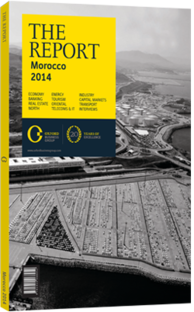OBG talks to Hamid Benbrahim El Andaloussi, Chairman, Moroccan Aerospace Industries Group (GIMAS)

Interview: Hamid Benbrahim El Andaloussi
What comparative advantages can Morocco offer to foreign companies?
HAMID BENBRAHIM EL ANDALOUSSI: The global aerospace sector is divided into Europe and North America, and an emerging China. Morocco is currently well positioned to penetrate the European market, taking advantage of the decline in competitiveness of Eastern European countries following their integration into the EU. As such, the kingdom has become an attractive and competitive base at the gate of the European market. Globally, the aerospace industry is booming, with high demand from South-east Asia and the Gulf, and the development of new programmes such as Airbus 350 and 320neo, Boeing 737 Max, and the LEAP engine by GE and Snecma, among others. GIMAS expects to see two decades of sustained growth, with the construction of 25,000 planes over the next 20 years, the generation of $5trn turnover in manufacturing and another $5trn in services. Further, the Moroccan aerospace sector has posted annual sustainable average growth of 15% over the past 10 years. The kingdom is also taking part in a new concept of “colocalisation”, whereby major manufacturers, including Safran, Bombardier, Boeing, Airbus, and many small and medium-sized enterprises (SMEs), have set up in the country to supplement their production systems in Europe with the same high quality standards. Morocco’s competitiveness is also based on large diversification of its supply chain, with the aerospace industry encompassing engineering, composite materials, machining and sheet material, electrical systems and wiring, onboard electronics, surface treatment, and maintenance repair and overhaul. In 2013, 106 aerospace firms were operating in Morocco, generating $1bn turnover and 10,000 jobs. This compares to just 10 firms a decade earlier.
What impact will the creation of Midparc have on cost competitiveness?
BENBRAHIM EL ANDALOUSSI: Our objective by 2020 is to put in place an industrial cluster with some 20,000 employees, encompassing a wide range of cross-cutting areas such as aerospace, security-defence and composite materials, electronic, and other appropriate services, in order to interlink engineering, design and technology. On September 30, 2013, His Majesty King Mohammed VI inaugurated Midparc, an integrated offshore platform occupying 128 ha, including a business centre, ready-to-use facilities and shared services for logistics, transport and catering. We adopted a one-stop shop approach whereby manufacturers do not have to buy land and can materialise their investment in one week. Midparc is meant to nurture talent and function as a grooming ground for specialised SMEs, which can take advantage of having a leading training centre located right next door. To this end, we have created the Moroccan Aerospace Institute in partnership with the French Union of Metal Industries, the Moroccan government and the French Agency for Development. GIMAS is forefronting the initiative, with 500 youngsters trained annually, all of them employed in the industry, and in 2014 we are extending the training for up to 1000 new students annually. We have also created a fund with the global investment group ACE Management to support SMEs from Europe, Morocco and Canada in their growth strategies.
How can niche markets be targeted to extend aerospace production?
BENBRAHIM EL ANDALOUSSI: At present, our production base in Morocco supplies clients such as Safran, Boeing, Rolls-Royce, Airbus, Bombardier, UTC Aerospace Systems and Sukhoi-Gulfstream, but most of our portfolio is still made up of French companies. GIMAS has shown a capacity to respond efficiently to the French market in the past, however, our goal is to extend our customer base by bringing in new manufacturers from Italy, UK, Spain, Germany, the US and Canada. Our main aim is to enlarge the supply chain in order to reinforce its sustainability and to become the most competitive aerospace base at the gate of Europe.
You have reached the limit of premium articles you can view for free.
Choose from the options below to purchase print or digital editions of our Reports. You can also purchase a website subscription giving you unlimited access to all of our Reports online for 12 months.
If you have already purchased this Report or have a website subscription, please login to continue.

